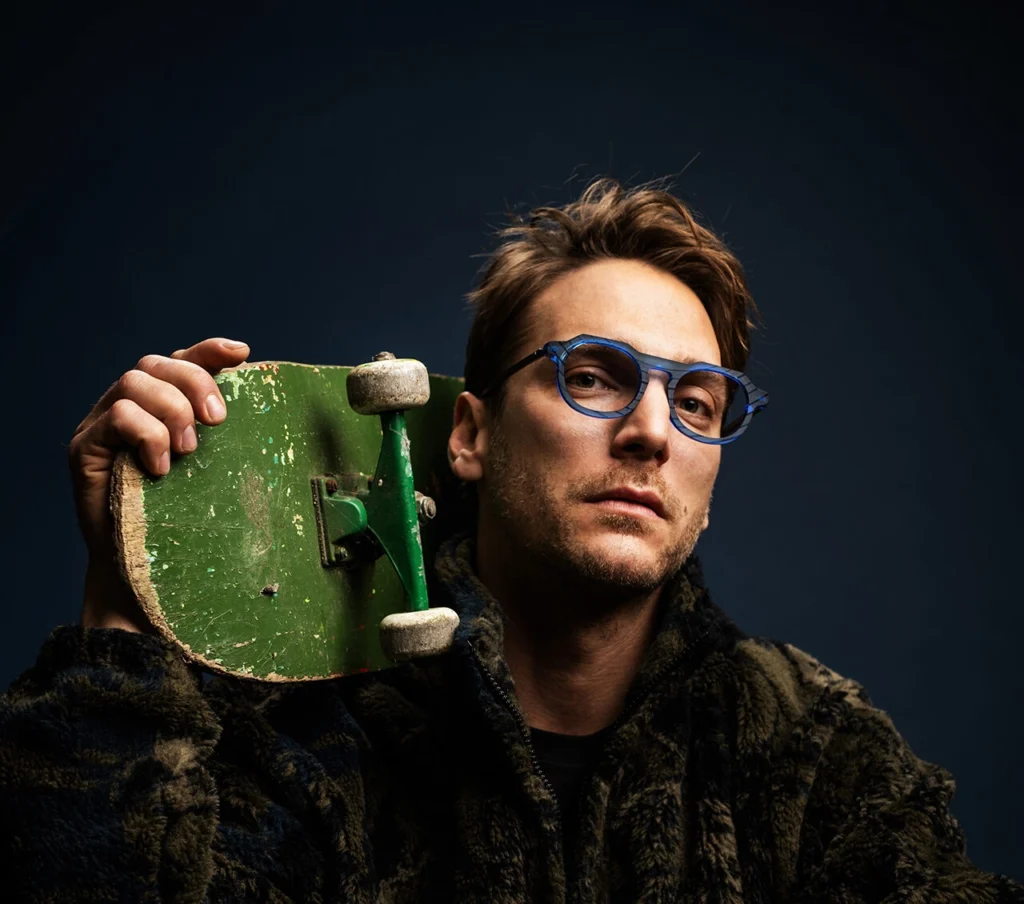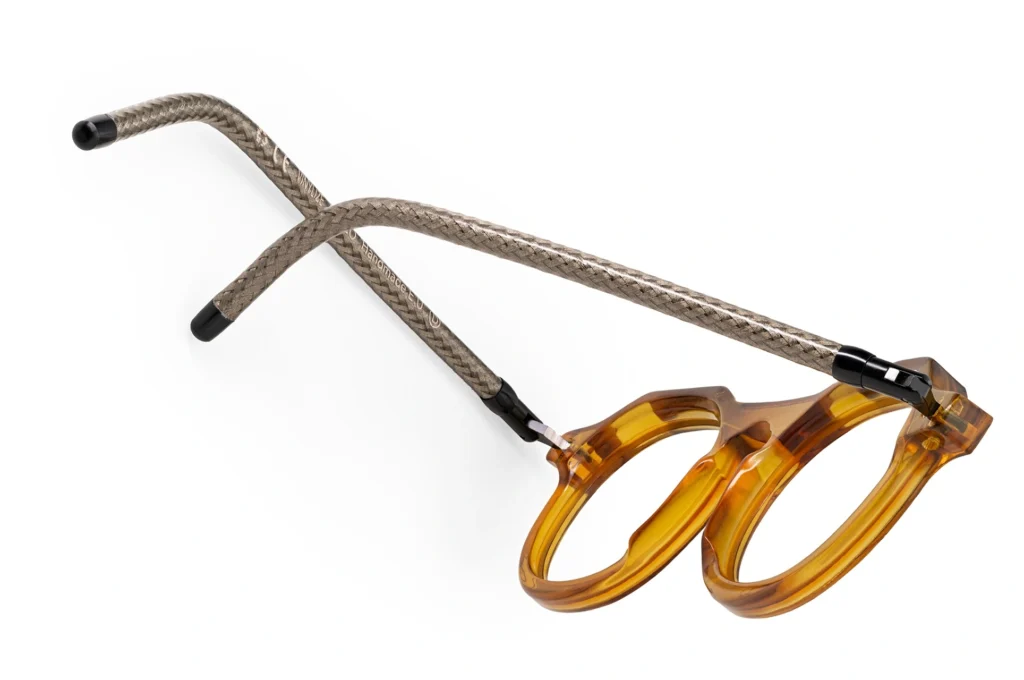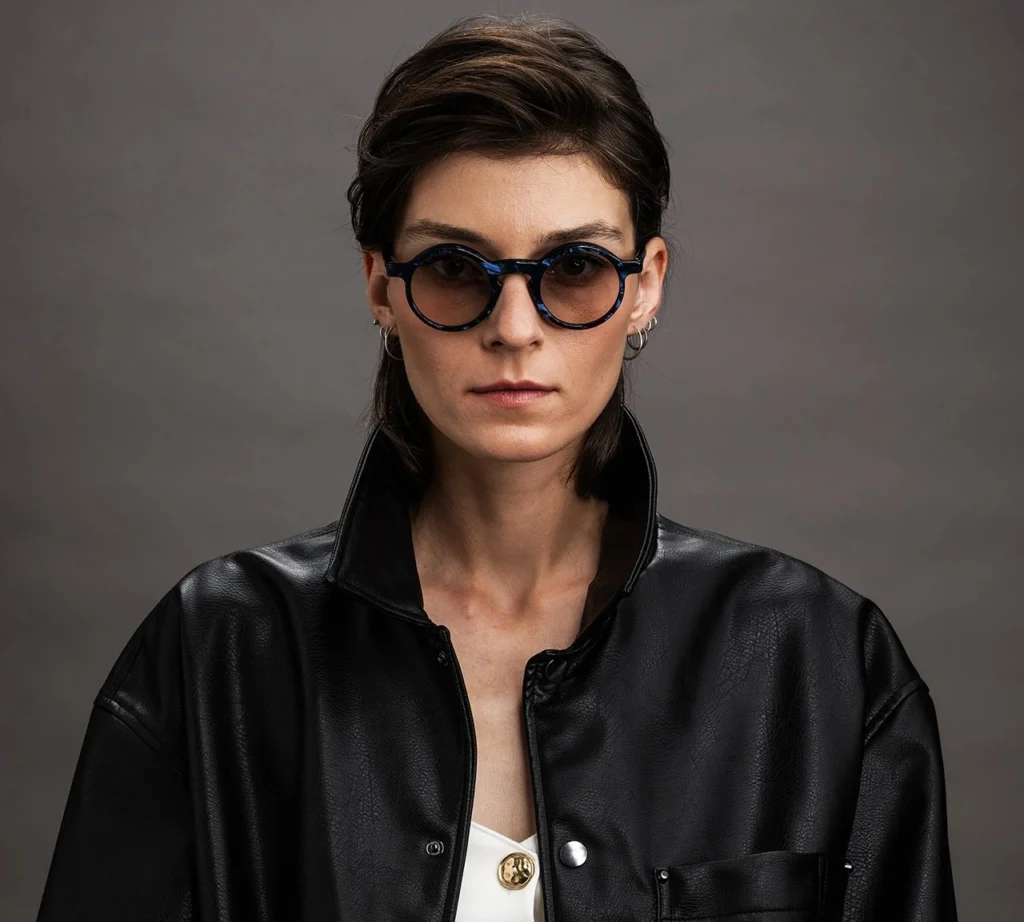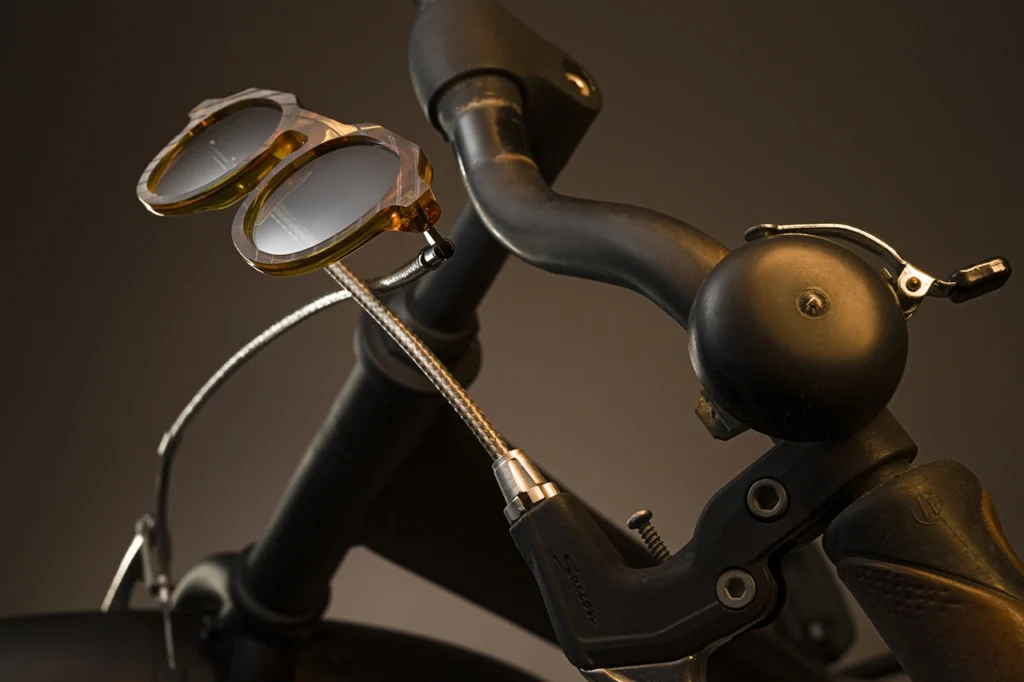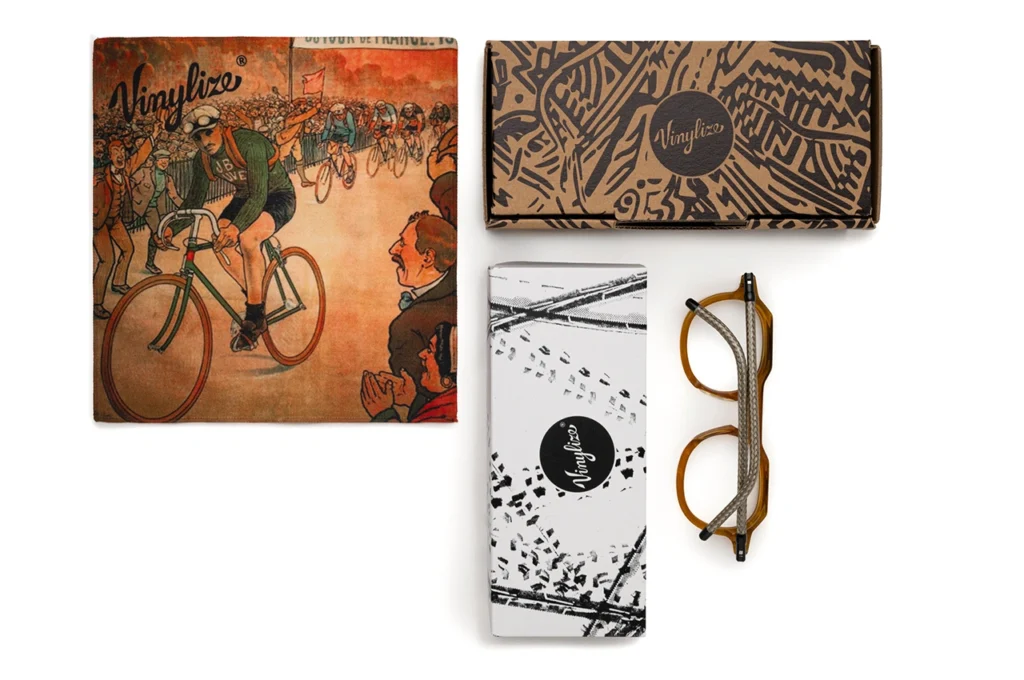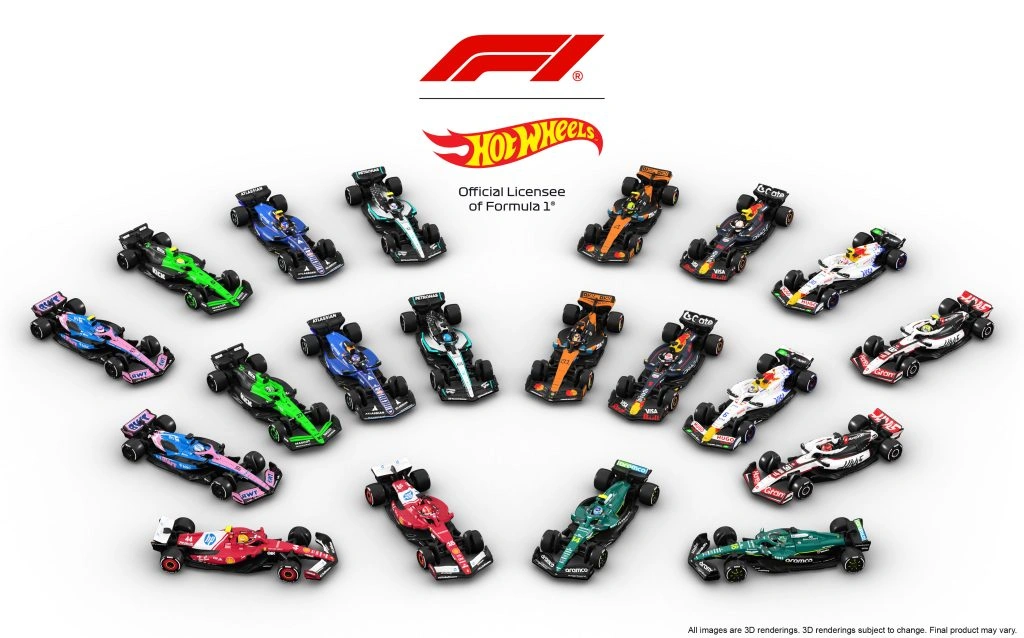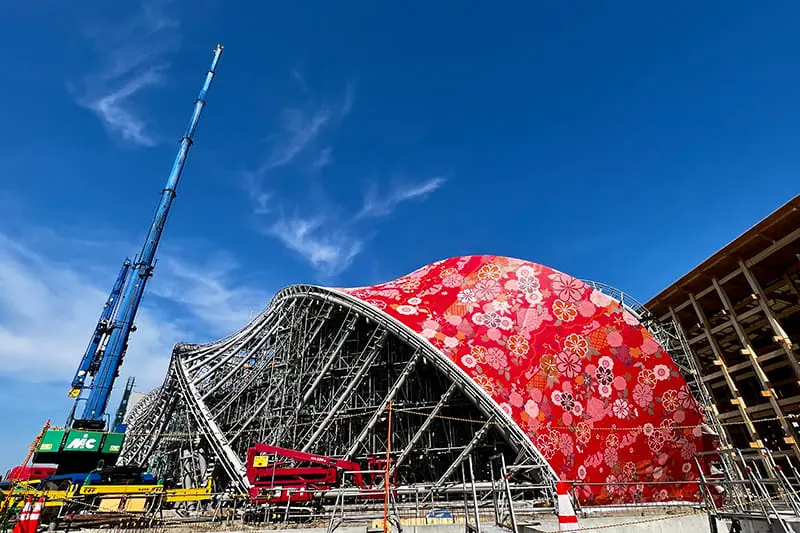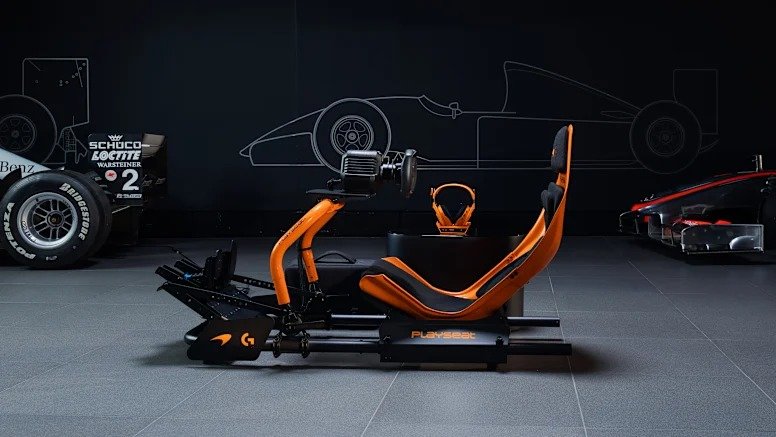When innovation and sustainability intersect, design transcends function—it becomes philosophy. The new CYKLO collection from Vinylize Eyewear embodies precisely that. It’s not just eyewear; it’s a dialogue between material history, craft, and human motion. In an era when circular design defines the future of style, Vinylize pushes the limits once again, this time crafting its frames not from vinyl records—the brand’s iconic medium—but from an unexpected new source: discarded bicycle brake cables.
The CYKLO collection merges Budapest’s cycling culture with Vinylize’s experimental craftsmanship, transforming waste into wearable identity. Every pair represents a reinvention of both the object and its meaning: where cables once braked motion, they now frame vision.
the philosophy of motion
Vinylize has always built its reputation around transformation. The brand’s founding principle—to give new life to old materials—was first realized when founder Zachary Tipton began creating eyewear from recycled vinyl records two decades ago. That vision evolved from a single experiment into an internationally acclaimed design house recognized for its ingenuity and distinctive aesthetics.
With CYKLO, the philosophy of renewal takes on a dynamic form. The collection draws direct inspiration from the kinetics of cycling, a symbol of freedom, rhythm, and perpetual motion. Every cyclist knows the tactile feeling of cables—the subtle pull, the tension that translates thought into action. By using these cables as the skeleton for its new eyewear, Vinylize captures that physicality in visual form.
As Tipton himself described in early previews, “We wanted to take the mechanics of movement and transform them into something permanent—frames that represent both precision engineering and urban resilience.”
material
The brilliance of the CYKLO project lies in its humble starting point. Used bicycle brake cables, sourced from repair shops across Budapest, become the raw material for the eyewear’s distinctive surface. Each cable, stripped, cleaned, and flattened, tells a story of its previous life—of speed, friction, and control.
The cables are embedded into bio-acetate, a sustainable cellulose-based material that forms the foundation of the frame. The result is a unique texture: fine metallic filaments ripple across the acetate like veins of energy, creating a pattern that shifts subtly under light. No two frames are identical—each pair carries the memory of a different journey.
Through this technique, Vinylize achieves what few design brands can: the transformation of utilitarian waste into a luxury object without aesthetic compromise. The metal-thread marbling is both industrial and organic, recalling muscle fibers, tire treads, or even vinyl grooves—the brand’s original muse.
transformation
The production process for CYKLO eyewear is as intricate as its concept. It begins with collection: used brake cables are gathered from urban bicycle workshops in Budapest and Vienna. The cables are then cut, sorted by diameter, and stripped of their sheathing. What remains are slender metal cords—thin, flexible, and impossibly strong.
Each wire is flattened and embedded into acetate sheets during a controlled lamination process, where heat and pressure bind metal to cellulose. The sheets are then cooled, sliced, and milled into frame fronts using CNC machinery. Edges are hand-polished to reveal the subtle depth of the embedded cables, while the surface maintains a tactile grain reminiscent of anodized aluminum.
Even the smallest design considerations—hinges, nose bridges, temple curvature—follow the same philosophy of movement. Lightweight titanium hardware and flexible temples mirror the engineering principles of cycling itself.
This process is not quick. Each pair takes several days to complete, and over 80% of the fabrication remains manual, preserving Vinylize’s boutique production ethos. The result is a craft-object that feels both futuristic and familiar—an artifact of the urban landscape reborn as personal style.
lang
CYKLO’s aesthetic identity rests in its contrasts: the mechanical and the organic, the polished and the imperfect. The visible cable patterns act like fingerprints—fragments of chaos rendered orderly through design.
The silhouettes themselves lean toward geometric minimalism. Models such as the CYKLO Velo and CYKLO Trackreference iconic wayfarer and rectangular profiles but are reinterpreted with sleeker bridges, tapered temples, and an architectural sense of balance. The surface finish is matte-satin, enhancing the metal’s subtle sheen without overpowering the acetate’s transparency.
Inside the frame, small engravings indicate the cable’s original origin (“Budapest Workshop 02,” for instance), turning every pair into a limited-edition artifact with geographic traceability.
The palette remains muted—gunmetal gray, smoke black, olive, and deep chestnut—allowing texture and form to speak louder than color. It’s utilitarian beauty, restrained yet assertive, reminiscent of vintage workshop tools elevated into fashion.
sustainability
At its heart, CYKLO is not merely a design project—it’s a manifesto for sustainable luxury. Vinylize has consistently operated within a closed-loop production model, minimizing waste by using upcycled materials and local manufacturing. The CYKLO initiative expands this ethos, demonstrating that sustainability need not be aesthetic compromise but an engine of creativity.
Each eyewear frame prevents several meters of stainless-steel cable from entering landfill, while the accompanying packaging uses recycled pulp fiber and plant-based inks. Even the carrying case is constructed from reclaimed bicycle inner tubes, hand-stitched and embossed with the Vinylize insignia.
In an industry often criticized for mass production and planned obsolescence, CYKLO stands as a counterpoint: proof that small-batch, hand-finished manufacturing can coexist with high design and commercial viability. It’s circularity made tangible—an ecosystem where beauty and responsibility cohabitate.
culture
Beyond its material ingenuity, CYKLO captures something deeper: the cultural identity of cycling itself. In cities like Budapest, Copenhagen, and Berlin, the bicycle is more than transport—it’s a symbol of independence, rhythm, and ritual. CYKLO transforms that lived experience into an aesthetic language.
There’s a poetic resonance in wearing frames made from motion. For many, cycling represents mindfulness in transit—a way of engaging with the world at a human speed. The eyewear echoes that idea: the lenses frame not just vision, but a worldview shaped by sustainability, awareness, and constant movement.
The brand’s promotional imagery reinforces this relationship. Models photographed in Budapest’s industrial outskirts wear CYKLO frames against backdrops of bridges, tracks, and warehouses—environments defined by flow and structure. The campaign’s visual language blurs the line between industrial documentation and art photography, evoking both Bauhaus precision and the rebellious energy of subculture.
evolution
The leap from vinyl records to bike cables might seem radical, but it follows Vinylize’s natural progression. The company has always been about preserving human stories in material form.
Vinyl records captured music, nostalgia, and emotion; bike cables carry the imprint of movement, exploration, and freedom. Both materials share an intimacy with touch and rhythm—whether it’s the spin of a record or the turn of a wheel.
CYKLO therefore feels less like a departure and more like a continuation. It represents the brand’s widening vocabulary—an exploration of how motion, memory, and matter intertwine.
In interviews, Tipton has emphasized that CYKLO is not a replacement for Vinylize’s classic record-based line but a parallel innovation stream. Where vinyl connects to sound and emotion, cables connect to movement and performance. Together, they form a continuum of creative reuse—a vision of the future built from the remains of modernity.
function
Functionality is as integral to CYKLO as concept. Each pair is designed for comfort during daily wear, with ergonomic detailing that complements the material’s rigidity. The frame fronts are slightly curved to fit naturally around the face, while the temples employ a spring-hinge system that ensures flexibility without sacrificing durability.
The lenses, available in both optical and sun formats, are coated with anti-reflective and blue-light filters, aligning with Vinylize’s positioning as a premium optical house. For sunglass versions, the brand offers polarized options tuned for cycling, enhancing contrast and glare resistance.
This harmony of aesthetics and utility reinforces Vinylize’s commitment to producing eyewear that is not only conceptually rich but practically superior—objects of design that invite use, not preservation.
craft
Every CYKLO frame is produced in Vinylize’s Budapest workshop, where artisans, engineers, and designers collaborate in an environment that blends analog craft with precision technology. The studio itself mirrors the ethos of the collection—industrial yet warm, filled with repurposed tools and instruments.
Local production remains central to Vinylize’s mission. By sourcing cables from regional bike repair networks and employing Hungarian craftspeople, the brand sustains a micro-economy of design and repair, where sustainability benefits community as much as environment.
The attention to detail is uncompromising. Each frame undergoes over thirty separate finishing stages, from polishing to alignment testing. The final inspection ensures that every product leaving the workshop upholds the dual standards of artistry and functionality.
style
The CYKLO Eyewear Collection will debut globally in November 2025, with limited availability through Vinylize’s Budapest flagship, select design retailers in Berlin, Tokyo, and Copenhagen, and online via vinylize.com.
Each frame will be accompanied by a serialized authenticity card, indicating the origin of the cables and the workshop of production.
Vinylize will also offer a custom order program, allowing buyers to submit their own bicycle cables for transformation into a personalized pair—closing the loop between user and maker, object and story.
No comments yet.

